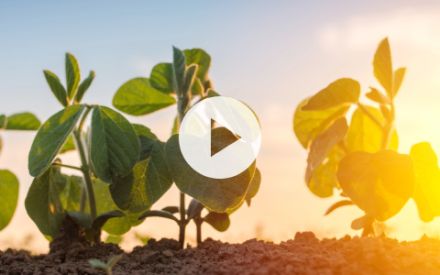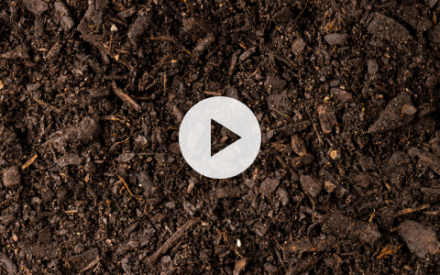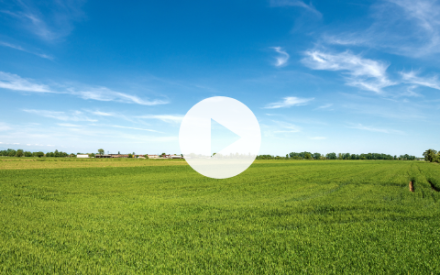A recap of the Badger Crop Connect webinar on June 9, 2023
While the early part of the year was characterized by large amounts of precipitation, the May Wisconsin experienced this year was the 4th driest on record. While some areas are receiving scattered amounts of precipitation this week, the speed with which the drought came on and led to the designation of “flash drought” for much of the state led UW-Madison State Climatologist Steve Vavrus to call this time “remarkable.”
The UW-Madison Division of Extension Crops and Soils team hosted a webinar on June 9th, 2023, bringing together speakers from across disciplines to provide their insights on how to navigate these conditions. A summary of their key points along with resources they pointed to are provided below.
Jump to the recording of the June 9 webinar
It is not time to panic about corn and early growing season moisture levels, yet
Joe Lauer, UW-Madison Professor and Extension-Funded Faculty Corn Agronomist emphasized that we are not really behind average yearly rainfall yet due to the wet April we experienced and that it is not time to panic yet as several years that have started out dry like this have turned out to be record crop years. He reminded us that corn will not use much water during early vegetative stages and as long as the roots can keep up with the receding moisture line in the soil, we should be okay for some time. It is possible that hot, sunny days may interfere with this and that leaf curling early in the day is a sign that the stress is getting worse.
For more information from Joe Lauer on corn and weather graphs for Arlington and Marshfield, see his website http://corn.agronomy.wisc.edu/Season/Default.aspx
Skip early soybean fungicide application for “plant health” if it is dry
Shawn Conley, UW-Madison Professor and Extension-Funded Faculty Soybean and Small Grains Agronomist shared that soybeans need very little water prior to the R1 stage, and a drought in August is far more detrimental to soybean yield. He encouraged farmers to skip an early season fungicide application for “plant health” if it’s dry. Finally, he addressed emergence issues and advised producers to check if unemerged seeds never germinated and still have potential or are dead from drying out after germination. In the latter event a replanting could be necessary if the herbicide program allows. He also noted that soybean aphids and two-spotted spider mites could be issues, but that at this stage some vegetation loss in soybeans is acceptable so hold off on insecticide applications.
On the small grains side, he stated that drier than normal conditions could lead to good wheat yield due to low disease pressure and lodging.
For more information from Shawn Conley on soybeans and small grains, see his website at https://coolbean.info/2023/06/08/impact-of-early-season-drought-on-soybean-yieldios-on-early-season-soybean/
Wait to cut forage if alfalfa is struggling from dry conditions to avoid suffering low yields
Marta Moura Kohmann, UW-Madison Assistant Professor and Extension-Funded Faculty of Forage Systems Agroecology focused on the state of the alfalfa crop. She noted that if alfalfa is small and stunted/dormant/drought-stressed in early vegetative stages, then we should wait to cut as yield will be low. If the alfalfa is at or near bloom but has gone dormant and over 10 inches tall, then cutting it can be economical and the forage will provide decent feed. If there is not enough for a harvest but it has gone dormant at reproductive stages, then removing the dormant forage prior to regrowth can be beneficial to ensure higher quality forage for the next cutting. Alfalfa is unlikely to regrow until soil moisture is replenished. She provided resources about selecting alternative forages, warm season forages, and grazing management in drought which can be found in the resources section below.
For more information and to contact Marta Kohmann, email mourakohmann@wisc.edu
Be aware of volatilization losses from applying urea or UAN at sidedress for corn
Daniel Smith, UW-Madison Nutrient and Pest Management Program Southwest Region Outreach Specialist addressed fertility concerns in dry conditions. He encouraged us to be optimistic as agronomists always have to be. He noted that the largest concern is around volatilization losses from applying urea or UAN at sidedress for corn. Volatilization can be up to 40% if we don’t experience rain and fertilizer is unincorporated. Urease inhibitors can be valuable here, but they do break down over time and require rainfall within a couple weeks to be most effective.
Smith also noted that not applying more than 3000 gallons per acre of manure to hay ground is good practice right now and that applying to forage that has had significant regrowth after first cutting is risky at this time due to the potential for burn with the high rates of evaporation we’re experiencing.
For more information and to contact Daniel Smith, email dhsmith@wisc.edu
May 2023 was the 4th driest May on record for Wisconsin
Steve Vavrus, UW-Madison Senior Scientist, Director of the Center for Climatic Research, and State Climatologist noted that this extraordinarily dry weather is due to a high-pressure system stuck over Canada bringing northeasterly winds and the smoke from wildfires in Quebec. There are signs it may break up soon. He provided perspective that May 2023 in Wisconsin was not only very dry on a national scale, but also historically as it was the 4th driest May on record for the state. He shared resources on how to stay on top of the latest climatic conditions, which can be found below in the resources section. Vavrus encouraged farmers and agronomists to participate in citizen science by contributing to the Condition Monitoring Observer Reports and the Community Collaborative Rain, Hail & Snow Network to improve the data from which policymakers and scientists are making decisions.
For more information from Steve Vavrus on Wisconsin’s climate, see his website at https://www.aos.wisc.edu/~sco/
Crop insurance provides some security in case of crop failure
Paul Mitchell, UW-Madison Professor and Extension-Funded Faculty of Agricultural and Applied Economics in Cropping Systems Management reassured us that it is early in the season and things are far from determined, but that even in the case of crop failure 75-80% of Wisconsin corn and soybean acres are insured. He noted that the crop was overall looking very good this year so far with good emergence and stand quality ratings, so a good yield is still very possible. He emphasized that it is important for farmers to be in direct contact with their crop insurance agents if things start to worsen as the intricacies of each situation can only be navigated by a crop insurance agent. Finally, he discussed the difference between Revenue Protection, the most common insurance program, and Revenue Protection with Harvest Price Exclusion (RP-HPE), a program with lower premiums but more risk involved. The key difference is that with RP-HPE, if grain prices increase from the time of purchase to the time of harvest, the guarantee does not increase to match the higher price, leaving a producer vulnerable to being unable to purchase feed for livestock or grain to satisfy futures contracts.
For more information from Paul Mitchell on crop markets and economics, see his website at https://aae.wisc.edu/pdmitchell/
USDA drought assistance
Gene Schriefer, State Executive Director of the United States Department of Agriculture in Wisconsin shared with us the details of what is required to trigger drought assistance from the USDA. He stated that a county must be in a D2 drought for eight weeks or a D3 or higher for any amount of time before a disaster is declared. The other pathway is to document 30% or more crop loss in a county and then contact USDA to petition the Secretary of Agriculture to declare a disaster. There are several programs available for livestock, forage, and crop ground, and farmers should consult USDA personnel or the website for more information. Schriefer also encouraged farmers and agronomists to participate in the citizen science networks referenced by Steve Vavrus, CMOR and CoCoRaHS to improve the data the USDA uses for declaration of drought.
For more information on USDA Disaster Assistance Programs, see the USDA website at https://www.fsa.usda.gov/programs-and-services/disaster-assistance-program/index


 ▶ Watch: 2025 Crop Input Cost Expectations
▶ Watch: 2025 Crop Input Cost Expectations ▶ Watch: Fall 2024 Corn and Soybean Outlook and Situation
▶ Watch: Fall 2024 Corn and Soybean Outlook and Situation ▶ Watch: Soil Health Decision Tool
▶ Watch: Soil Health Decision Tool ▶ Watch: Wisconsin Ag Climate Outlook Oct. 23
▶ Watch: Wisconsin Ag Climate Outlook Oct. 23


